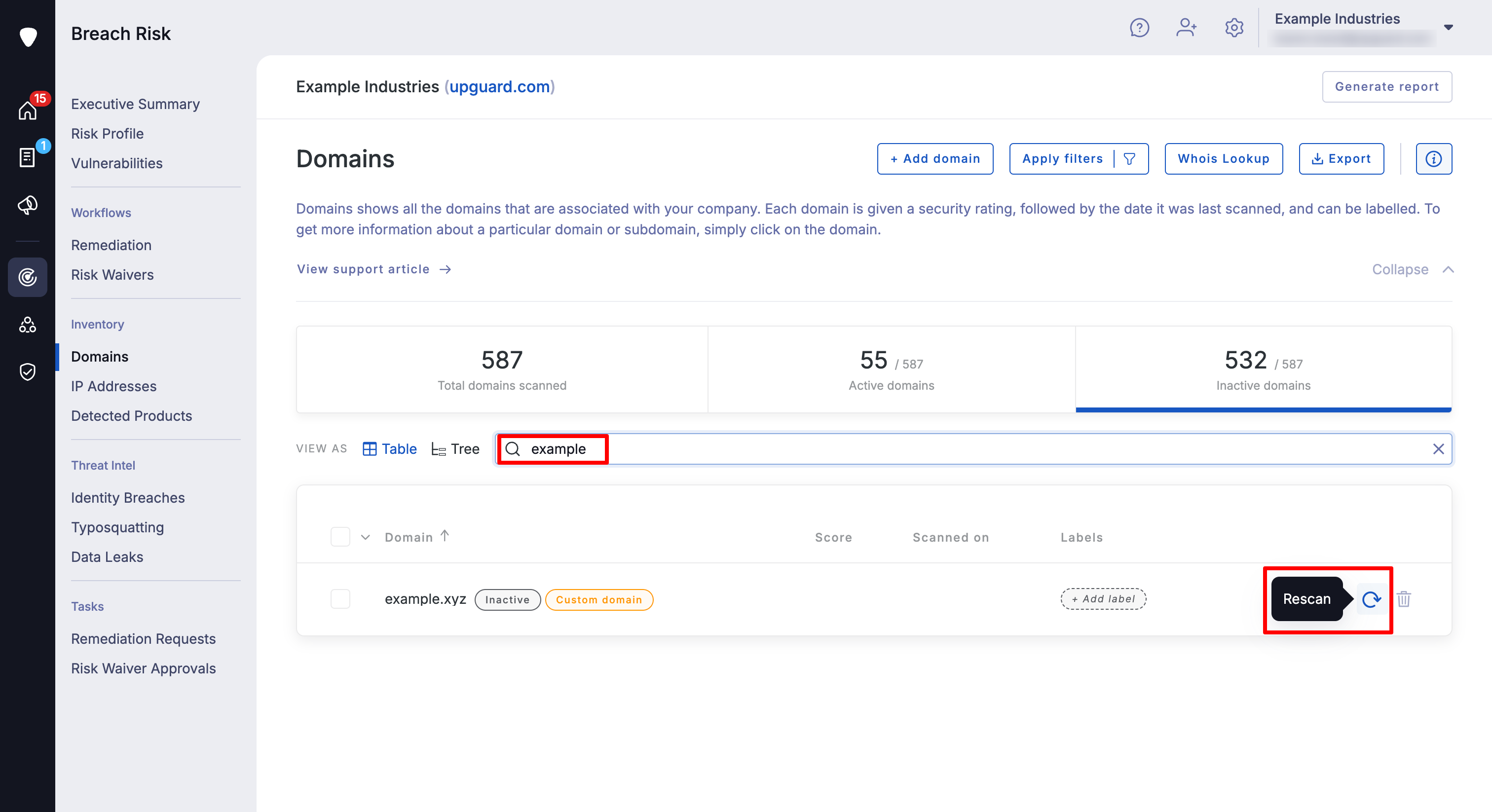What's the difference between an active and inactive domain?
Learn about how UpGuard Breach Risk classifies a domain as active or inactive.
UpGuard scans active domains on a daily basis. An active domain is a domain with an open port or MX record. More specifically, it's a domain that has:
-
An HTTP server responding on port 80/443 including 404s
-
Any open ports
-
An MX record
This definition includes domains that redirect users from one domain to another.
In contrast, an inactive domain is a domain with no open ports and no MX record. If a domain inherits its DNS records from a wildcard DNS record and responds with an HTTP response code >= 400, it is also considered inactive.
Consider the subdomain foo.example.com which does not have any DNS records of its own and instead inherits its DNS records from a wildcard published under *.example.com. When UpGuard scans foo.example.com, it will be considered inactive unless the HTTP response is less than 400 (e.g. 200 or 301). A 404 or 500 response would be considered inactive and the domain would appear under the Inactive tab in Domains.
Domains parked at some registrars are also considered inactive. If you believe one of your domains is parked but it is coming up as active, please let us know.
We scan inactive domains on a monthly basis. This means if you open a port or MX record to an inactive domain, it will move back into your active list after our monthly scan registers the changes.
If you would like to manually rescan an inactive domain prior to our monthly scan, you can do so by heading to Breach Risk > Domains > Inactive domains.

In the example below, I've chosen to search for the domain example.xyz. Once you've located the domain you want to rescan, click the rescan icon.

See also:
